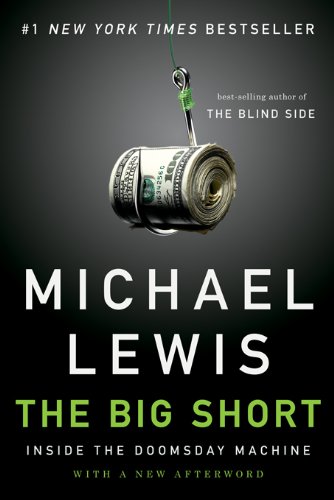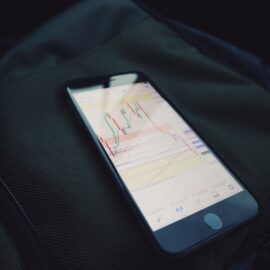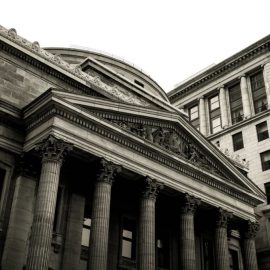

This article is an excerpt from the Shortform summary of "The Big Short" by Michael Lewis. Shortform has the world's best summaries of books you should be reading.
Like this article? Sign up for a free trial here .
What is a CDO, or collateralized debt obligation? Why are CDOs so confusing, even for people in the financial world, and how did they contribute to the 2008 financial crisis?
A CDO (collateralized debt obligation) is a financial instrument that bundles together low-quality bonds into a new product.
Learn why CDOs were developed and how they contributed to the 2008 financial crisis.
The CDO: A Masterpiece of Complexity
Before we answer the question, “What is a CDO?”, let’s look at some of the events leading up to their creation.
Prior to the financial crisis, Goldman Sachs had been selling investors $100 million in credit default swaps. In doing so, they were making a bet that millions of poor and indebted Americans would be able to pay their mortgages on time. No one believed that any major investment bank would be willing to make that stupid a bet, no matter how outwardly confident they were in their subprime mortgage bonds. Goldman couldn’t have been the one left holding the bag. So who was?
American International Group, Inc. (AIG). The insurance giant was a sterling, blue-chip corporation that—crucially—wasn’t a bank at all. It was an insurance company. And weren’t credit default swaps just another form of insurance?
AIG began insuring Goldman Sachs’ and Deutsche Bank’s subprime mortgage bonds as quickly as they could get their hands on them. From their point of view, the loan pools were sufficiently diversified that there was little probability of them all failing at the same time. As far as AIG leadership was concerned, the premiums from the credit default swaps were free money. They could only lose if housing prices fell.
AIG, clearly, did not understand the nuances of the business in which it was so knee-deep. AIG was insuring piles of mortgages that it thought were no more than 10 percent subprime—in fact, that figure was over 95 percent. They had taken the long position, gambling on destitute American homeowners to pay their mortgages on time.
Clearly, Goldman Sachs was fleecing AIG. The insurance giant seemed to have no idea just how risky the securities that they’d insured actually were.
How did Goldman Sachs achieve this? By creating a masterfully complex and opaque financial instrument known as a collateralized debt obligation (CDO). What is a collateralized debt obligation?
What Is a CDO?
Essentially, the CDO was a product designed to conceal the true risks of mortgage-backed securities. If you recall, the mortgage-backed security was a bond made up of thousands of loans. The logic was that the bond as a whole was secure, as it was highly unlikely that the underlying mortgages would all tank at once—there was safety in numbers.
The CDO in finance just applied this principle to the bonds themselves. A CDO bundled together the lowest-quality bonds into a whole new tower. It was a bundle of bundles. Bizarrely, the ratings agencies treated this repackaged product as an entirely new financial instrument and slapped a triple-A rating on it (the highest rating that can be given to an asset). We’ll get into why the agencies assigned such high ratings to these dubious financial products later in the summary, but for now, it’s just important to know that these ratings defied market logic and common sense. The CDO wasn’t a new financial product at all—it was just a Frankenstein monster made up of the dodgiest tranches of the original mortgage-backed securities. Yet the ratings agencies treated it as a completely separate portfolio of assets. Apparently, to Moody’s, S&P, and Fitch (the Big Three ratings agencies), the CDO was greater than the sum of its parts.
Still not sure you can answer, “What is a CDO?” If this sounds confusing or abstract, that’s because it was supposed to be. Complexity was baked into the design—Goldman Sachs didn’t want customers like AIG to know what they were purchasing or understand the true value of the assets. Opacity was the point. No one really knew was a CDO was.
This opacity would contribute to the 2008 financial crisis.
CDOs Lose Their Value
In February 2007, just after the convention in Las Vegas, a publicly-traded, triple-B subprime bond index known as the ABX fell by more than a point on the bond markets. It was the first sign to the outside world that all was not well in the housing markets. Yet to the dismay of the short investors, the subprime market kept humming along, as though there was no impending crisis. The big banks seemed to be blithely ignoring the crisis and the ratings agencies refused to revise their positive ratings of CDOs. The big Wall Street firms were insisting that generic “market sentiment” was driving the value of the bonds down, not the poor quality of the underlying loans themselves. The value of the bonds was completely divorced from the subprime loans underpinning them.
For the short-selling investors, it was as though they’d bought cheap fire insurance on a house that was already on fire. It shouldn’t have been this easy—their swaps were worth far more than they’d been purchased for. This incongruity became even crazier as the subprime bond indexes tumbled even further: by June 2007, CDOs had lost 30 percent of their original value. Ledley and Mai began to suspect that the markets were bluffing their way through the crisis, continuing to sell synthetic CDOs created from the original junk bonds. They had no choice: the banks were all so deep into subprime that they couldn’t afford to change their position.
The complexity of the financial instruments like CDOs helped the banks continue to fool the markets. No one on Wall Street really understood these products, how they worked, or what was in them. There was total asymmetry of information, with the information mismatch heavily favoring the likes of Goldman Sachs. Thus, the banks were able to dictate the terms of an inefficient market. The prices of CDOs were whatever the banks said they were. Almost nobody had the knowledge (or was willing to do the work) to question this. Even the SEC (Securities and Exchange Commission), ostensibly Wall Street’s beat cop, had no clue what was going on with these derivatives.
In summary, what is a CDO (collateralized debt obligation)? It’s a financial instrument that bundles together low-quality bonds into a new product. How did CDOs contribute to the 2008 financial crisis? Because ratings agencies and investors didn’t really understand what a CDO was.
———End of Preview———

Like what you just read? Read the rest of the world's best summary of "The Big Short" at Shortform . Learn the book's critical concepts in 20 minutes or less .
Here's what you'll find in our full The Big Short summary :
- How the world's biggest banks contributed to the 2008 financial crisis, greedily and stupidly
- How a group of contrarian traders foresaw the bubble popping, and made millions from their bets
- What we learned from the 2008 crisis - if anything






